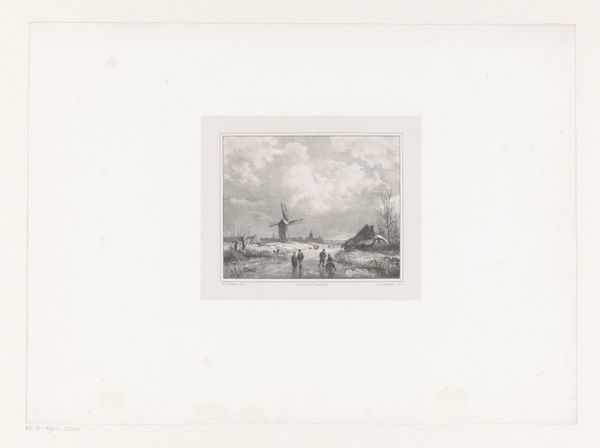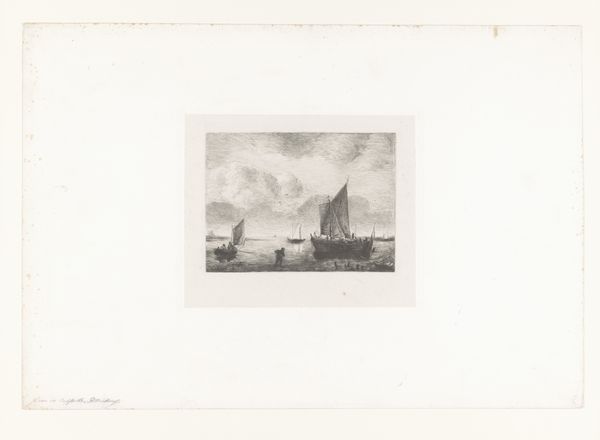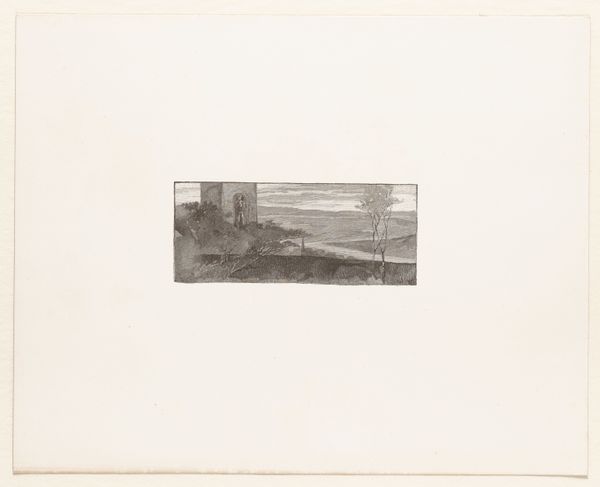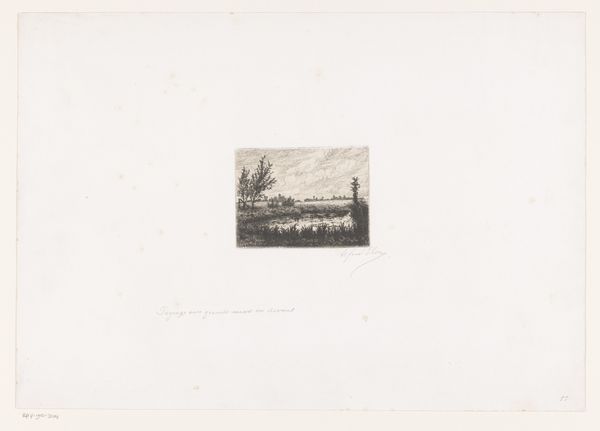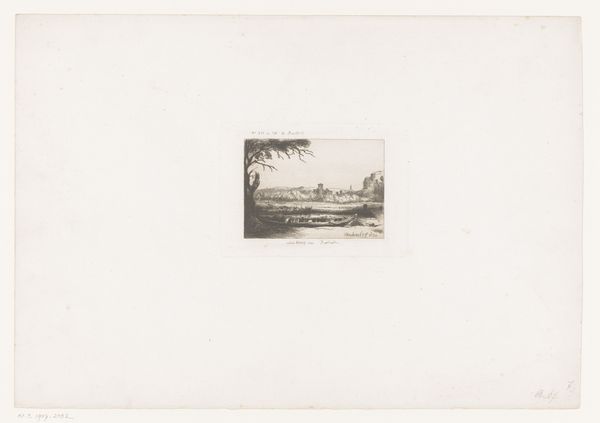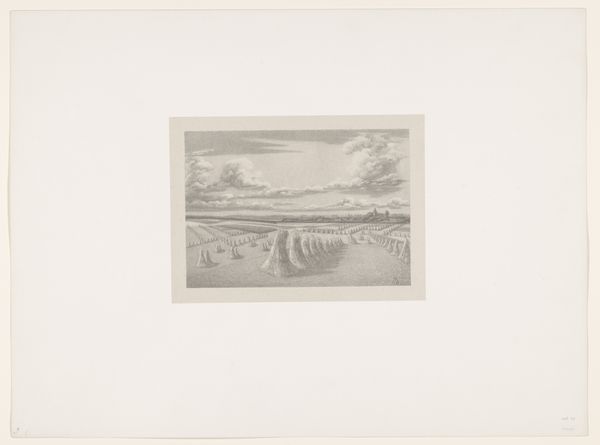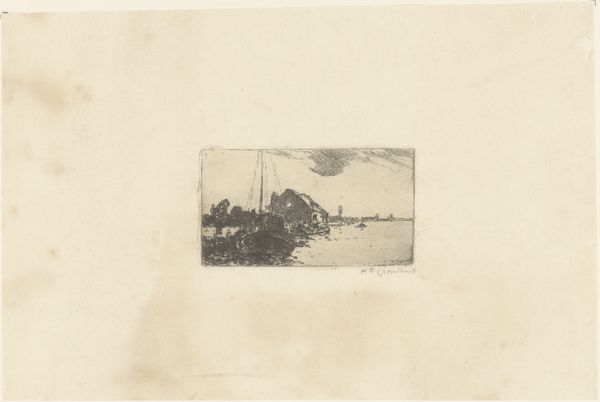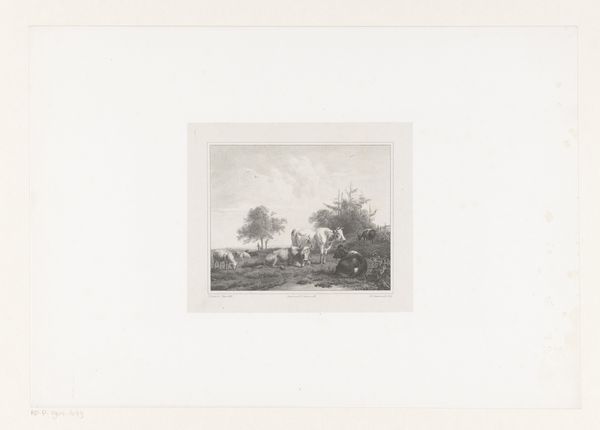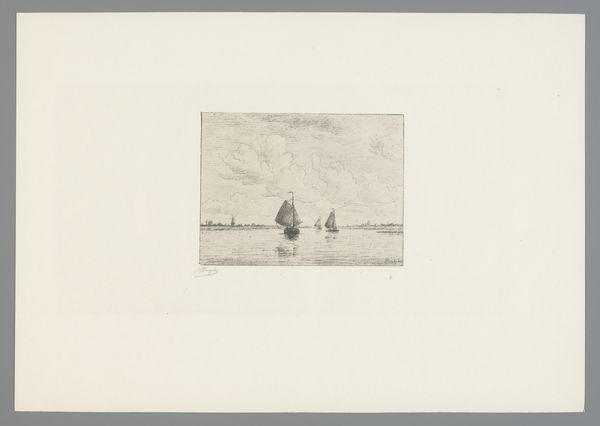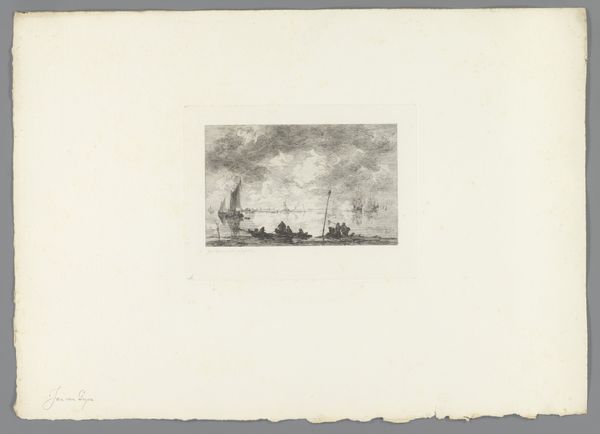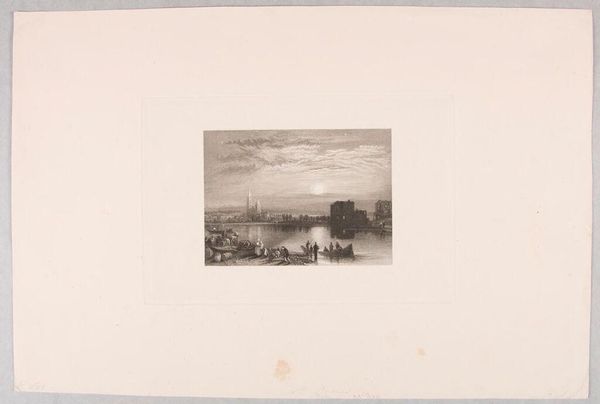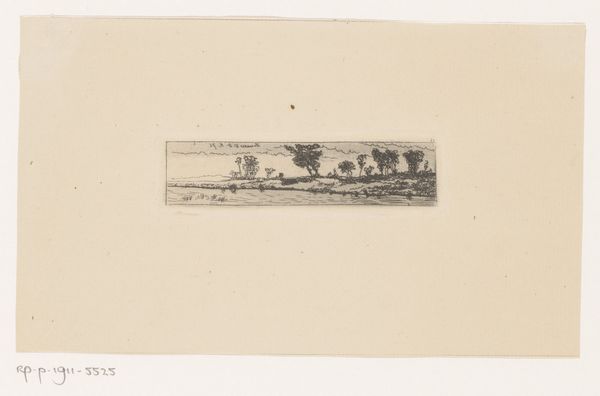
print, etching
# print
#
etching
#
landscape
#
genre-painting
Dimensions: height 302 mm, width 433 mm
Copyright: Rijks Museum: Open Domain
Editor: So, this is "Figures on Ice near a Mill," an etching made by Jan Dam Steuerwald sometime between 1822 and 1863, and it’s currently housed at the Rijksmuseum. The figures on the ice seem to be enjoying themselves, but there's also something quite stark and wintry about it. As a historian, how do you interpret this work in relation to its historical and social context? Curator: Well, first, consider the setting: ice skating in the Netherlands wasn't just recreation. It was deeply woven into the social fabric, connecting communities when waterways froze. It wasn't just for the wealthy, although they certainly participated. Steuerwald produced a print, making this imagery more widely accessible. Who do you think these images served? Editor: I suppose prints like this brought these genre scenes to a broader middle class, allowing them to partake in the visual culture. It almost democratized art, in a way? Curator: Precisely. And look at the windmill – a classic Dutch symbol, often representing industry and prosperity. In the 19th century, industrial advancements were causing societal shifts, creating tension between traditional and modern ways of life. These idyllic winter scenes served as a kind of visual reassurance. What is being reassured, do you think? Editor: Maybe these scenes provided a sense of nostalgia for simpler times? It looks peaceful and ordered, nothing like the noisy factories that were appearing elsewhere. Curator: Exactly! It’s interesting how images of leisure and landscape can participate in national identity and even social commentary. So, looking at the placement of the windmill, what would you infer by this placement from a socio-political perspective? Editor: Hmmm…Well, the windmill has been strategically placed in the artwork as the most salient symbol of the piece. In a way, this seems to symbolize that society in this historical era was greatly influenced by societal dependence on technology. It would probably be extremely common to depend greatly on technology during that time period. Curator: Excellent observations. These winter landscapes were not mere aesthetic choices, but engaged directly with ongoing societal dialogues. I’ve found new perspectives myself, reflecting upon our exchange. Editor: I definitely learned so much about how art acts as both a reflection of, and an active participant in, societal dialogues.
Comments
No comments
Be the first to comment and join the conversation on the ultimate creative platform.
